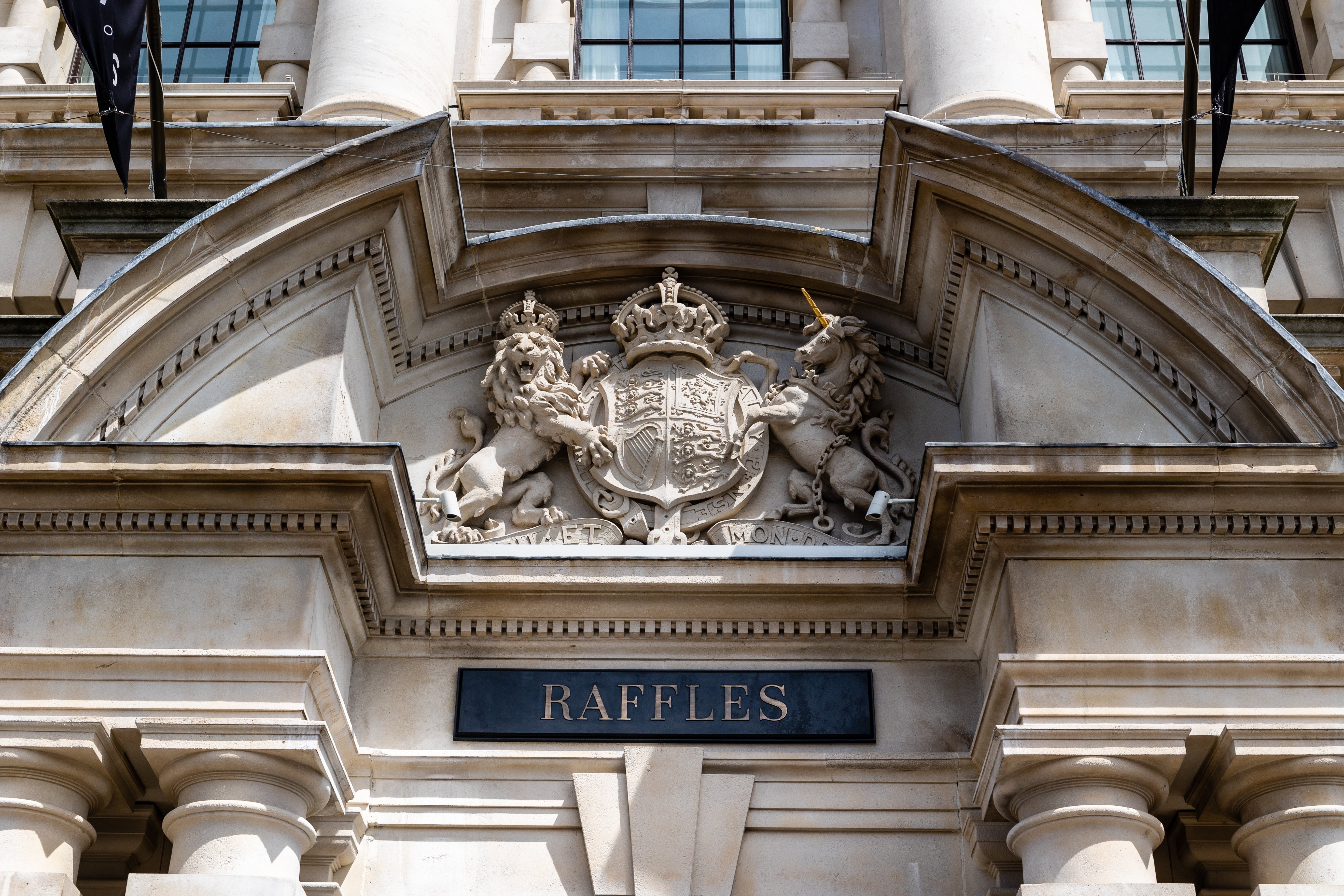The Unknown Modern Master: Fascinating Facts About Banksy
What an intriguing, magnificent, epic dichotomy. Banksy, one of the most famous and celebrated artists in the world, and also the most elusive – his identity remains, officially at least, unknown.

His work – we can say with relative confidence that Banksy is in fact a man – remains utterly and consistently thrilling. Active since the late 1990s, when he emerged from Bristol in southwest England as a prolific graffiti artist, Banksy is now known almost everywhere: a rapid byword for razor-sharp political commentary via his distinctive style of stencilled street art. With stunning efficiency and trademark secrecy, Banksy drops ‘bombs’ (with his art) wherever he sees fit, creating a vapour trail of intrigue and debate by tackling a whole range of issues such as war, capitalism, consumerism, social injustice, and abuse of authority. With a swashbuckling style that is characterised by dark humour and an endlessly witty critique of contemporary society, Banksy’s work – which always garners huge media attention – is genuinely hard to ignore. But, remarkably, the man himself is phenomenally skilled at staying in the shadows. Despite decades at the top of his game, the secret is not out. The true identity of this proud ‘disruptor’ remains a mystery. Details are speculative. Though we don’t know his real name or background, we can tell you much more about his incredible career – and the ongoing impact that his street art, and vision, have on society.
SELF-DESTRUCTING ARTWORK
Banksy shocked the art world in 2018 when a painting of one of his iconic works – ‘Girl with Balloon’ – self-destructed just moments after being sold at a Sotheby’s auction for over £1 million. This was a highly theatrical piece of performance art and its live destruction – done by a hidden shredder inside the frame which was activated as soon as the gavel fell (partially shredding the canvas, not all of it) only served to instantly inflate the legend of Banksy’s famous chutzpah. Not only that, the modified piece was later renamed (‘Love is in the Bin’) and, with it being considered an entirely new work of art, its value significantly increased. ‘Girl with Balloon’ had actually been voted as Great Britain’s favourite artwork in a 2017 poll.
Also Read: Interesting Facts About Claude Monet
FORMER PUBLIC SCHOOLBOY?
The appetite for unearthing Banksy’s real identity is entirely predictable: the media are desperately hungry to land what would be a gargantuan story. A number of specific people have been linked with ‘being Banksy’ in the past - Massive Attack musician Robert Del Naja, children’s TV presenter Neil Buchanan (formerly of ‘Art Attack’), and Robin Gunningham, “a former public schoolboy brought up in middle-class suburbia”, according to the Mail on Sunday newspaper. But none of these names have really stuck. De Naja says he is a friend of Banksy, but obviously won’t say more; Buchanan has vehemently denied it; Mr Gunningham has never commented on the speculation. ‘Banksy’ – perhaps – isn’t actually one person, but a swarm of many, operating as a whip-smart art collective that is all in the know and sworn to total secrecy. There is a chance, albeit there does appear to be a leading light. Either way, the PR representatives of Banksy – as ‘he’ is known – are masters at being tight-lipped.
Also Read: Keith Haring Facts
200 LIVE RATS
In 2005 Banksy held his infamous ‘Crude Oils’ exhibition in a temporary storefront in Notting Hill, west London, where he showcased a typically satirical take on classic art. Critiquing modern society, especially environmental degradation, iconic oil paintings were “vandalised” and peppered with his own motifs: totally reimagined and politically charged. Thereby, Van Gogh’s ‘Sunflowers’ were wilting and dying, Monet’s ‘Water Lilies’ scene was filled with shopping carts and traffic cones, and so on. But Banksy wanted to deliver an extra twist and had a brainwave. Images of rats feature heavily in his work, often representing a subversive feeling of underground survival and rebellion, much in kin with street artists. So why not hammer home this symbolism and really bring the theme to life by allowing 200 live rats to roam freely within the gallery space? He did it. It was unsettling, unpredictable, uncomfortable… and very successful in challenging the status quo and making people think.
Also Read: Andy Warhol Interesting Facts
CELEBRITY WORSHIPPERS
Banksy has a huge following, with millions of devotees across the world. He is also revered by other famous people – especially A-list celebrities. Brad Pitt, Damien Hirst, Justin Bieber, Serena Williams, and Angelina Jolie are all known to have acquired his work, and while his work is deeply loved – and unquestionably valuable – it is also Banksy’s philosophy that draws people in: his vision of an alternative society to the one which largely presides over the western world. “Imagine a city where graffiti wasn’t illegal, a city where everybody could draw whatever they liked. Where every street was awash with a million colours and little phrases. Where standing at a bus stop was never boring. A city that felt like a party where everyone was invited, not just the estate agents and barons of big businesses. Imagine a city like that and stop leaning against the wall – it’s wet,” wrote Banksy in 2010.
Also Read: Facts About Vincent Van Gogh
CONFLICT ZONES
Unflinching, uncompromising, brave. That’s what Banksy seeks through artistic expression and, in order to make the boldest statement possible, he is seemingly prepared to take his message anywhere – with work appearing in several conflict zones, including the Gaza Strip and Ukraine. His pieces in these highly challenging environments are simple to interpret: he wants to highlight the plight of people living in war-torn areas. In 2022 Banksy unveiled one of his trademark works on a building devastated by Russian shelling in Ukraine. The image of a gymnast doing a handstand amid debris in the town of Borodyanka was confirmed as Banksy’s on his Instagram account (Banksy uses social media and his website to confirm the authenticity of his works, and Instagram is usually the place where new works are first revealed to the public). Other murals that were found around Kyiv suggest he had been working extensively in Ukraine, which was invaded by Russia in February of that year.
Contradictions reign. Banksy is anti-corporate; a dazzling street artist whose wizardry is generally available for free in public spaces, yet whose best work can command millions at auction, no matter how hard he rallies against commercialisation. He doesn’t want personal limelight and fights tooth and nail (and brilliantly so) to evade it. Yet he wants the whole world to hear what he’s got to say, and for people to really stand up and take action. Therein lies the key: ambition. He wants to be highly influential, and by cannily retaining his prized anonymity and cleverly cultivating his mystique, he is infinitely more powerful and more influential because of it, provoking audiences from Bristol to Bangkok, and London to LA.



